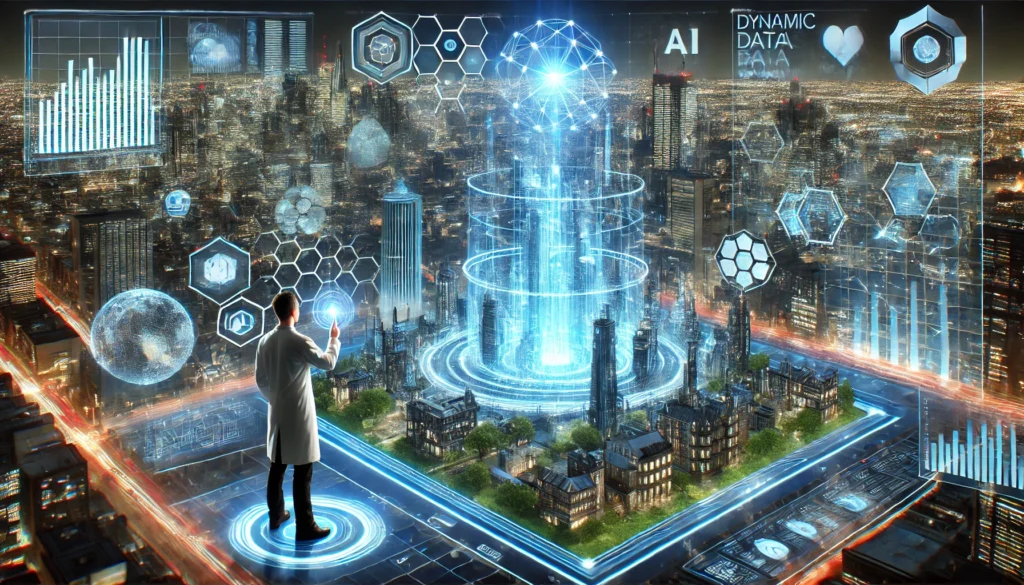The main intention behind Digital Twinning is the transfiguration of an industry in its integration of physical and digital worlds. It means a very advanced virtual model mimicking real-world objectivity, systems, or process. This is the continuous observation of real-time simulations and thorough analysis. This technology is enhancing various fields, such as manufacturing, healthcare, energy, and urban planning.

What is a Digital Twinning?
A digital twinning is a virtual model that continuously mirrors a physical system in the real-time. Continuous updates are made by using data from sensors, which exist in the real environment, in reflection of any change with its counterpart. Critical data sent by machines fitted with sophisticated sensors in the factory to create digital models. Today, engineers have been able to monitor and track how well the equipment performs and foresee problems much earlier on. From here, they have planned to achieve optimal efficiency while doing the same.
Digital twin and it’s working
Developing and managing a digital twin includes
Data Acquisition: It acquires data using sensors that observe asset performance, its environment, and other key parameters.
Data Integration: It integrates the gathered data into an updated virtual model to represent the genuine system in question.
Using digital twins, It allows for the simulation of virtually any scenario, and then systems can be analyzed under different conditions and variables.
Predictive Analytics: The real-time data creates predictions of equipment breakdown allowing for prevention.
Lessons from the Digital Twin: A feedback loop for preventive measures in physical systems.
Apps that recommend digital twinning
Digital twins are becoming increasingly used to underpin every industry
Manufacturing: They improve performance and predict failures while enhancing quality control by using virtual machine and production line models.
These models, especially the digital ones, optimize traffic, energy use, and environmental impact, with results highly attributable to smarter urban planning.
Healthcare: It permits patient-specific treatments based on predicted physiological responses to events.
For high-performance energy systems and infrastructures such as power grids and pipelines, it would bring real-time insights and advanced fault detection.
Automotive and Aerospace: Prototyping with simulated car and aircraft models ensures safety and optimizes performance before mass production.
Benefits of Digital Twinning
Digital Twins offer various benefits.
Efficiency: Real-time monitoring optimizes operations and reduces waste.
Cost savings: Predictive capabilities will avoid costly repairs and unplanned downtime.
A combination of data and simulation is the best way to make informed and strategic decisions. This models a solution to every specific requirement in health care and manufacturing. It is possible for Digital Twins to identify inefficiency and reduce environmental impact.
Challenges to digital twins:
Data Safety: Sensitive and timely data is guarded.
Difficult Integration: Integrating many legacy systems into Digital Twins is not easy.
High Upfront Investment: Creating infrastructure and also laying sensors can be quite capital-intensive.
Data Quality: The quality of data will impact the performance of a Digital Twin. Future of Digital Twins In the future, digital twins will be much more potent with AI, machine learning, and IoT. With advancements in cloud, edge computing, and 5G, data processing and simulation will improve. They include complete cities, self-driving cars, virtual worlds – eventually all sorts of digital twins.
Conclusion
Digital Twins are a new way of shaping our relationship with the world. New technologies from companies will provide business world applications with tools that can enhance operational efficiency, reduce costs, and enable informed decision-making by providing detailed virtual models of reality. This potential of the technology to drive innovation in sectors such as manufacturing, healthcare, and smart cities makes it a critical driver for these industries.
